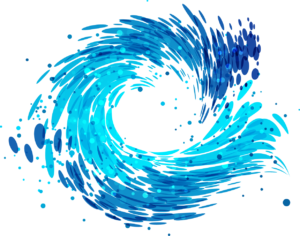by Timothy
 |
| Monterey Cyprus by Melina Meza |
I recently taught a course on Yoga for High Blood Pressure on Yoga U Online. During the program I suggested that doing certain inverted poses such as Headstand (Sirsasana) may not be a good idea, even for some people whose blood pressure (BP) is “well controlled” by medications. But one listener had heard during her teacher training that inversions were okay in this situation. Her instructors had consulted a local cardiologist and shown the doctor the poses in question, and he had said he didn’t have a problem with them in people whose BP was under control.
The concern is that when you go upside down, the pressure in the head increases, which could at least theoretically increase the risk of a stroke. I say theoretically, because actually no one really knows how large the risk is, though it’s likely very, very small. As I’ve written elsewhere, more than likely yoga greatly decreases the overall risk of a stroke. But that doesn’t mean it’s a good idea to push your luck.
Interestingly, blood pressure is one area where yoga teachers are sometimes more conservative than doctors. Aadil Pahkivala, the teacher I worked with on the high blood pressure chapter of my book Yoga as Medicine, has found that some people with well-controlled BP nonetheless demonstrate jitteriness when they do some inversions and strong backbends. This nervous system agitation, which can be visible to the teacher and palpable to the student (at least the ones who have developed their internal awareness though their yoga practices), suggests a potential problem.
In medical school, we were taught to always weigh risks vs. benefits of any test, drug or medical procedure under consideration. In medicine, this comes under the category of “first do no harm.” In yoga, we’ve got the same idea with the notion of ahimsa, non-harming, which is considered the foundation of any yoga practice. Again, the risk of a stroke when inverting with “well-controlled” high blood pressure is likely very small, but even a tiny risk of something very bad should be factored in when deciding whether or not to do a particular yoga pose. In yoga, a crucial way to assess safety is to study your student—or yourself, if you’re the student in question—as they do the practice in question.
So rather than simply saying, “The doctor says it’s okay to do Headstand so let’s do it,” a more prudent approach is to let that be the beginning of your evaluation. If you’re a teacher, consider the following questions: Does the student appear to have the strength and flexibility to do the pose safely? How is their breathing in the pose? Do they look uncomfortable? Are they able to maintain a healthy curve in the neck? Are their neck veins bulging? How do they say they feel in the pose? It is even possible, if you’ve got a blood pressure device, to measure the pressure to make sure it isn’t spiking in the pose or poses you’re concerned about. And if you’re a student concerned about high blood pressure, ask your teacher to help you do this evaluation.
Especially when the risks are uncertain, the more information you can get the better. And after you have all the information, it’s time to practice ahimsa.
Follow Yoga for Healthy Aging on Facebook ° To order Yoga for Healthy Aging: A Guide to Lifelong Well-Being, go to Amazon, Shambhala, Indie Bound or your local bookstore.


This is a different view from the one advocated by Drs Nina and Bell in their earlier postings on High BP and Yoga. Their reasoning was that "heart above head" and Baroreceptors lining the blood vessels supplying the brain regulates and controls the high BP. So who is correct? Do we or do we not do inversions when we have elevated BP?
Hi Anon– I can see why you might be confused. But because inverted poses INITIALLY raise blood pressure, before the baroreceptor feedback kicks in and then lowers it, they are considered unsafe for people who already have high blood pressure (see our post http://yogaforhealthyaging.blogspot.com/2011/11/friday-q-cautions-for-inversions.html). Timothy is also saying they may be unsafe for those with high blood pressure that is being treated with medication. Tomorrow I'll write something about inverted poses that are safe for those with high blood pressure, and also recommend techniques methods for lowering blood pressure.
What about patients with high eye pressure?
I know this is a very old thread, but high blood pressure naturally comes with other diseases such as diabetes, heart disease, etc. I feel it’s wise to err on the side of caution here. Also anyone with eye diseases such as glaucoma or retinopathy should never be in an inverted pose. I’m currently in a yoga teacher training, and i’m saddened by the lack of information given in this regard. My husband is a type 1 diabetic with high blood pressure & diabetic retinopathy which is why I have a keen interest in this. I avoid putting him in any inverted pose, including legs up the wall which is traditionally seen as quite restorative.
Hello, may I ask you about retina problems, when is prone to be tear, tin, or event detachement. Its very important for me while I am studing in Iyengar teaching trainings. I have to find more info for cooling efect on eyes. I know abotu inverted, but during assesment should I demonstrate only for very short period ? also, I feel like all urdhva Hastasana in standing asanas makes tension in my head, what influence to eyes too.. where to find out any very directly info about many asanas. It is indicated in books only about inversions. Thank you in advance.